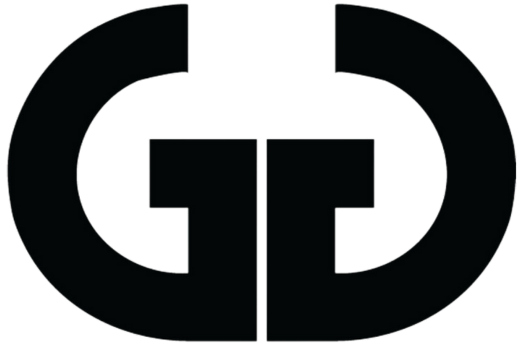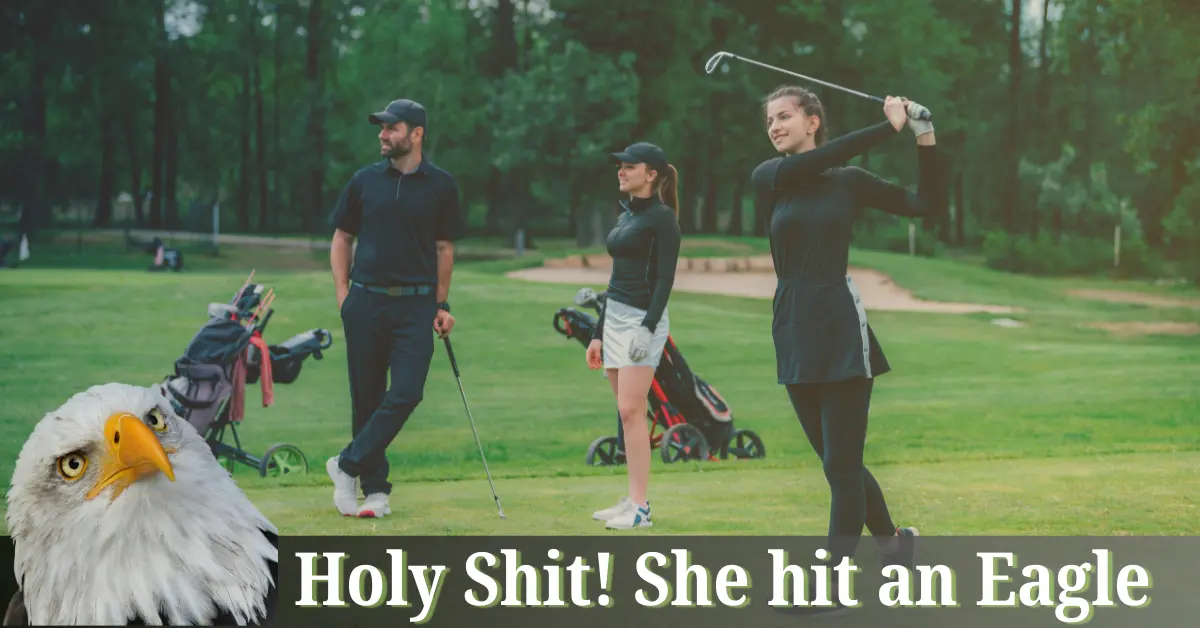I still recall the time when I had first seen the game of golf, and the ball going into the green seemed no less than a satisfaction to me. That’s what urged me to begin golfing right at the raw age of 14.
As an excited person curious to put the ball into the hole, I went on to buy the necessary golf equipment. When the shopkeeper asked me about clubs, he presented various golf clubs, and I had no idea about them.
I went on by a famous brand and thus bought the unstable golf club, which made it more difficult for me to learn unless my coach pointed it out.
It is quite a common situation with many of you as well, and hence, from my experience in the field of golf, I have guided you best with the different golf clubs for your arsenal!
Key Takeaways
- Drivers are ideal for crushing those long shots with their longer shafts and larger clubheads.
- Irons are your go-to clubs for shots that are around 200 yards from the green.
- Hybrids are like the best of both worlds, combining the features of woods and irons. They offer versatility and forgiveness in your shot.
- Wedges have higher lofts and are great for low-distance shots helping you rescue the ball.
- Putters are a must-have for those precise shots near the hole.
Types of Golf Clubs
There are a plethora of names of golf clubs that would end up puzzling you. Hence, check each of them according to their purpose and their need!
Woods
As the name implies, Woods might indicate that its clubheads are made of wood; however, it’s not true. Usually, it has titanium or steel clubheads.

They are generally distinct, with longer shafts and larger, rounded heads. Further, it is used to hit the balls to a longer distance.
Usage: Ideal for Long Shots
It is further divided into two types: Drivers and Fairway Woods.
1. Drivers
Drivers are the longest of all clubs and are a subcategory of Woods. It is also known as 1-Wood, and it has the biggest head.
2. Fairway Woods
Fairway Woods are the ones that have a shorter clubhead than the Drivers. They have a 13-22⁰ loft angle.
Irons
Irons are a type of golf club that has smaller and thinner clubheads. Most of these clubs are solids; however, you might sometimes find hollow ones. They come in different ranges from 1 to 9.
However, 3-iron to 9-iron is primarily used and hence regarded as stereotypical. This is because 1-iron to 3-iron is challenging to master. The number you choose depends upon the type of shot you want to excel with.

Golfers use irons when the ball they want to hit is 200 yards away or at a lesser distance from the green.
Irons are further divided into three types:
1. Long Irons
The 2-4 numbered iron clubs are known as long irons. They are named so because they have a longer shaft and shorter loft.
Long irons give a lower trajectory and have lower forgiveness; thus, it’s challenging to hit with long irons.
Usage: Low launch angles help to hit the ball from 180-260 yards.
2. Middle Irons
The 5,6, and 7-numbered irons are known as middle irons. They are versatile clubs that offer a balanced combination of distance and control.
They have ensured a medium-sized shaft, hence known as middle or mid-irons. Golfers often use it in hallways and are ideal for long approach shots.
Usage: Ideal for shots between 130-210 yards.
3. Short Irons
The 8 and 9 number irons fall under the category of short irons. Their clubheads have the maximum mass. It is named so that amongst irons, they have the shortest shaft.
They are traditionally considered the easiest to hit. These are used in situations that demand very high accuracy. Therefore, it becomes critical to minimize the impact of mis-hits.
Usage: Suitable for shots between 130-150 yards with full swing. They nail in providing shots with a higher loft.
Hybrids
Both Woods and Irons have their set of pros and cons. However, if you wish to avoid them, you need both clubs in your arsenal. The good part is that you don’t need to buy each individually.
The “Hybrids,” as the name suggests, are an intermediate type with features of both woods and irons. Hybrids are of various kinds, like 2-hybrids and 3-hybrids. Here, the number represents the number of iron they replace.

When a golfer has to hit a long shot on rough terrains, hybrids come into the picture. Further, if it’s challenging to use long-iron, hybrids are your go-to choice.
Further, the best part is that it also works perfectly for novice golfers. To be more precise, I recommend beginners go with hybrid clubs and not with either type.
One of the core reasons is that its design would make it easy for you to hit the ball into the green. It would give you flawless results, so you can easily have a good grip over your club.
Usage: Ideal when you need more versatility and forgiveness.
Wedges
Wedges are pretty similar to Irons and are popular amongst different golf clubs. Hence, they are regarded as a subcategory of irons. Like them, Wedges are suitable for hitting shots that are not distant.

Further, the shot’s accuracy from a Wedge club is why most golfers use it for low-distance. Besides, they have the highest lofts, shortest shafts, and heavier clubheads than irons.
There are different types of Wedges, and let us check each!
1. Pitching Wedges
Pitching Wedges are the most used of all types of wedges. It’s ideally used for approach shots (which have a high trajectory); however, veterans even excel in playing chip shots (low-trajectory shots).
One of the reasons why golfers prefer Pitching Wedges is that any shots played with it make the slightest bounce. They have a loft between 46-50°.
Usage: Appropriate for shots from a range of 50-120 yards.
2. Gap Wedges
Gap wedges have a vast loft; you can find their purpose in several scenarios. These aren’t necessary, but their usage comes into the picture when some shots are difficult with a Pitch and Sand Wedge.
Gap Wedges are helpful when you hit shots with more distance than sand Wedges but a lesser distance than Pitch Wedges. Further, these have a loft of 50-55⁰.
Usage: You can hit shots to a distance of 100 yards.
3. Sand Wedges
Sand Wedges are among the most common golf club names and have plenty of lofts, about 55-57⁰. Thus, you can use it to hit the ball high into the air.
So, if your ball is stuck in a sand trap, it can quickly rescue the ball and put it into the green.
Usage: You can hit shots to a distance of 90 yards with it.
4. Lob Wedges
Lob Wedges are the ones that have a giant loft of 58-64⁰. So, when your ball gets stuck somewhere deep or something else, you will need a greater loft to rescue it and put it into the green.
Here’s where Lob Wedges are of great help.
Usage: For quick shots requiring greater loft.
5. Ultra-Lob Wedges
Ultra-lob Wedges are useful when hitting shots with higher and shorter trajectories than Lob Wedges. These have a loft of 64⁰.
One of its remarkable characteristics is the ability to hit exceptionally high angles of shots.
Usage: Acing shots that require a higher angle.
Check Out: Golf Club Distance Chart: Getting The Most From Your Yardage
Putters
You can take up to 14 golf clubs into your golf bag. Out of these, Putters are something that you cannot miss on adding to your arsenal! What makes them so incredible?

Well, from beginners to pro golfers, everyone comes across the scenario when you hit an incredible shot near the hole. But, unfortunately, it doesn’t go into the green. That’s when you need to use Putters.
Newer putters have grooves on the face to make the ball roll instead of skidding upon impact. Putter comes in various shapes and sizes, and its types depend upon certain factors.
Types of Putters (Based On Head And Length)
When you are shopping for a putter, you need to consider the types and when their use comes into the picture. A putter has two components, head, and length, and the types differ for each.
To begin with, learning more about them, let’s consider each in detail!
Putter Head
The component of the putter which hits the ball is known as the putter head. Its type differs depending on the stability and mass of the putter head. Its shape and material are crucial in determining how your shot will turn out!
- Blade: Blades are the most common putters used, primarily those beginner golfers often use on golf courses. Their toe weights are slightly higher and have a heavy spot towards the heel. Blade putters also come in different head shapes and hosels.
- Mallet: A Mallet differs from a Blade Putter as this one has a giant head. This ensures more stability towards the club head as the mass throughout the putter is evenly distributed. They even come in various designs and are helpful in multiple cases.
- Hybrid: “Hybrid,” as the word implies, combines both blade and mallet putters. You might be wondering how it happens. Like Blade putters, they are more toe-weighted, and oversized clubheads impart stability to the club head.
Putter Length
Most novice golfers buy a putter that’s either too long or too small according to their heights. When you stand straight, measure the length between your top hands and the floors.
This recorded length is how long your putter should be. Therefore, due to the various lengths available, they come into three categories!
- Standard: Inexperienced golfers typically prefer using a Standard putter depending on their height and putting power. It comes in lengths of 33″, 34″, or 35″.
- Belly Putters: Before moving to the Belly Putters, it is essential to know that USGA had made them illegal in 2016. Yet, you can use it if you play just for fun but not in tournaments. These are the ones you withstand against your belly.
- Long Putters: As the name implies, their length varies from 48-52″. You can use it by resting it against your chest or chin for optimum performance. However, the belly putter rules impacted it as well. But still, some golfers use it. To counteract, you can also keep its grip anchored against your chest or chin.
- Counterbalanced Putters: These are 38″ in length, and what sets them apart is that they have extra weight towards the club end. Thus, the putter is more stable at the upper part. So you can hit the ball with a higher speed and impact.
Chippers
Chippers are a type of putter; however, they are not regarded as a subcategory since their loft is between 23-37⁰. In contrast, putters have a loft of 3-4⁰.

They have two usable faces, and what’s distinct is that the ball is at a negligible distance from the green.
Conclusion
Amongst the various types of golf clubs, you must know which one would be suitable for you. Not everyone is going well for all of you! It differs from person to person.
However, if you are just a beginner, I recommend having at least one hybrid club with you that would be your companion throughout the game of golf.
Since you can carry 14 golf clubs and make it a rule of thumb to have a hybrid and a putter with you, it will make it easier for you to hit the ball into the hole when it’s pretty near.
For the rest of the types of golf clubs, you can consider the golf course depending on the distance you want to play the game.
FAQs
How to regrip Golf Club?
To regrip your golf club, follow the steps:
1. Slice down the old grip in a spiral motion until removed, and clean the shaft thoroughly.
2. Apply new double-sided grip tape and the solvent/lubricants inside the replacement grip and on the shaft.
3. Slide up your grip into the proper position and firmly push down into place until it reaches the grip tape.
Are custom golf clubs worth it?
Indeed, custom golf clubs are the best for golfers. 87% of golfers who have a properly customized golf club can reduce their handicap by 10%.





0 Comments